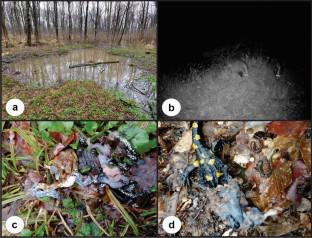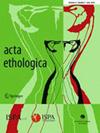Do it like the otter—data on the amphibian skinning behaviour in the Eurasian badger (Meles meles L., 1758)
Abstract
Abstract
The European badger Meles meles (Carnivora: Mustelidae) is a widely distributed mammal across Europe. This is a highly adaptive species, which is capable of exploiting a wide variety of habitats and food resources. The European badger is a threatened species, and knowledge on all aspects of its ecology and behaviour may provide important information concerning the environmental factors driving its distribution and population density. In the present study, we report on a specific predatory behaviour in M. meles. At Nature Park “Shumensko plato” (NE Bulgaria), the badgers were detected to feed on common toads (Bufo bufo) and fire salamanders (Salamandra salamandra). Both amphibians are known to produce highly toxic secrets which cover the surface of the skin and are generally avoided as prey by the majority of mammal predators. During the prey manipulation phase of the feeding process, the European badger removed the poisonous skin of the captured amphibians and in most cases consumed the rest of the body (except the eggs of the toads). This skinning behaviour appears to be rather similar to that described in another mustelid—the European otter (Lutra lutra). This behaviour could potentially benefit the badgers in using broader spectrum of food resources, especially in case of limited food availability.


 求助内容:
求助内容: 应助结果提醒方式:
应助结果提醒方式:


